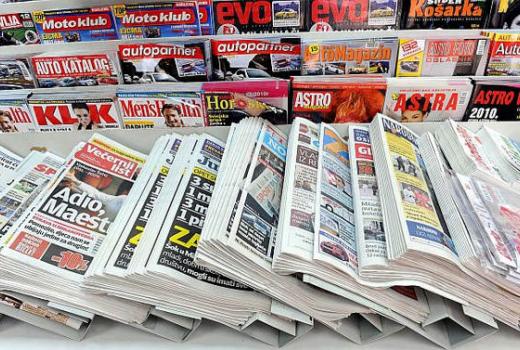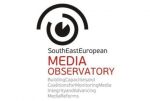Croatia: Greater Dependence of Media on Few Major Advertisers in Times of Financial Crisis

Croatia: Greater Dependence of Media on Few Major Advertisers in Times of Financial Crisis
17/09/2014
Devastating consequences of financial crisis, without effective counter-measures
Recession and financial crisis in Croatia, which has entered its sixth year, has ferociously affected the media industry in the country, leaving no sector spared of its dire consequences. In the period from 2008 to 2013, the overall annual turnover (sales plus advertising) of the media industry in Croatia contracted for nearly 40 percent - from 5.8 billion HRK to 3.7 billion HRK (1 EUR = 7.55 HRK). Advertising revenue itself in the same period dropped from 2.2 billion to 1.3 billion HRK. Circulation of daily and weekly papers is barely half of what it used to be in 2007, offering no margin for publishers to alter the course of the recession tsunami. Introduction of the super-reduced VAT rates (5%) on daily newspapers (2013) offered just a short break to publishers, more as a measure to stop the further dramatic financial erosion than as a decisive step in changing the downwards trend. The number of employed journalists and other media professionals dropped from 12,500 in 2008 to 9,100 in 2013, which presents an alarming 25 percent cut. Loss of advertising revenues is therefore a “genuine” result of the overall contraction of all financial and market parameters.
The first projections of the 2014 H1 results indicate that the advertising market continues to decline, although on a somewhat slower path. Sustainable recovery is not in sight; in strategic terms, at least not before the year 2020. As a result of the endured recession and – consequently – change in setting consumers’ habits and financial priorities – commercial media have become even more dependent on the reduced advertising income, making the sector in general more vulnerable to direct or subtle pressures. Regardless of the considerable contraction of the market – or, as some media analysts point out - exactly because of that, advertising agencies and major advertisers have increased their influence over media. The top ten advertisers (Agrokor Corporation, telecom operators, major national breweries, banks) are rarely exposed in mainstream media in terms of investigative journalism or in any context they would consider as “negative”. “Media are so desperate for advertising income that they would accept anything that goes in the package – from self-censorship to product placement and hidden advertising”, a PR expert recently said. This has had a direct consequence on the content quality and reliability and – therefore – on overall trust in media.
Media mostly do not receive public subsidies; the public broadcasting service is financed primarily through licence fee (and advertising to some extent), while commercial media rely solely on sales and advertising income. There’s only one exception: local commercial radio and TV stations may apply for financial support to the Fund for Pluralization of Media (total of EUR 5m, alimented from 3% of the subscription fee to the public TV service) for “productions of public interest”. “Most local TV and radio stations maintain their news, documentary and other non-commercial productions mostly thanks to the support from the Fund”, said Miljenko Vinković, owner of a local TV station. As of 2013, web portals are allowed to apply to the Fund as well. Although the Fund itself has so far significantly contributed to dissemination of diverse content of public interest, lack of criteria and arbitrary decisions in allocating the Fund’s financial support and lack of transparency in using it remain the biggest problem on the implementation level.
Of course, not only recession, but other factors contributed to the media crisis as well. Ante Gavranović, a senior Croatian media analyst, recently said: “The ongoing crisis is a result of a combination of contracted advertising market, reflecting the overall financial crisis, managements incapable to cope with new market circumstances, and drop in trust in media, as a result of trivialization of content, as usually the last resort of media managements with no vision”. This element (responsibility of journalists/content producers, editors and media managers) is just too often underestimated in the context of the media crisis (especially when discussed by media professionals). Similarly, this aspect will not be predominant in the context of this report.
Regulation of competition in advertising market is mostly functional
Given the market size, the advertising sector itself is well-structured, covering all media by type (print, broadcast, web and social media) and area of coverage (local, national, regional).
Public TV is allowed to have up to nine minutes of advertising time in an hour of programming in non-prime time slots and four minutes of advertising in prime time (18:00 to 22:00 hrs). This stipulation is strictly monitored by the regulatory agency and association of commercial TV stations and is rarely a matter of dispute. Public TV is not allowed to use subscription fee to buy commercial content, which has significantly contributed to balancing the market. Namely, public TV had a history of distorting the market by using public funds for buying commercial content, sometimes deliberately inflating the standard prices of programming “packages” (such as films, serials and sports rights) in order to get an advantage against the commercial competitors. Dumping of the advertising market was often a practice of public TV in early and mid-2000. At present however, the dumping of prices seems to be largely eradicated. Furthermore, ever a lower percentage of advertising income in public TV funds (currently, advertising contributes with 9 percent to the overall budget; the share used to be around 30 percent in early and mid-2000) has opened a debate on a complete ban of commercial advertising on public TV. Without making any recommendations, the fact is that public TV needs an internal re-organization and rationalization of expenses which would enable it to serve the public TV’s role with subscription-based income only (EUR150 m/year). While not substantially affecting the public TV, such a decision would considerably contribute to consolidation of the commercial media sector.
Commercial TV stations may have up to 12 minutes of advertising time in an hour of programming. This stipulation is also monitored by the regulatory agency. There have been no reports of breach of this legal provision; objections and (financial) sanctions issued by the regulatory body so far have been more related to inappropriate content of commercials (sexually explicit or gender stereotyping ads, for example) than to breach of advertising time limitations.
Some other regulations (for example, stipulation that at least 15% of the advertising budgets of public companies and government campaigns –which still represent an important share of the overall advertising market - should go to local commercial media) also contribute to the operational budgets of the local commercial media. However, practice has shown that this regulation lacks transparency and defined implementation criteria.
As an EU Member State, Croatia follows the AVMS Directive in terms of distribution of foreign programs. So far, no objections in that regard have been filed with the authorized regulatory body. With almost 70 percent of households using DTT (digital terrestrial television), most commercials are spread across seven national and 20 local/regional TV stations, leaving only a minuscule percentage of the overall advertising volume to paid TV packages. Distribution of advertising spending in the media sectors has not changed due to the crisis: some 60 percent still goes to TV and radio, 35 percent to print, while an approximate 3-5 percent goes to online media. The problem of impact of redistributed foreign media on the advertising market, unlike in some other countries in the region, is not relevant for the media scene in Croatia.
Since recently, by efficiently entering networks of local radio and TV stations, leading national agencies and national advertisers have become more influential in the local advertising markets as well. As a direct consequence, different types of barter and in-kind deals between local media owners and small local businesses are no longer a predominant type of local media advertising income, as they used to be.
Media-related industries: expensive audience measurement and increased presence of several international advertising agencies
A lion’s share of the advertising market in Croatia is controlled by the biggest international advertising agencies (such as McCann Erikson, BBDO or Grey, for example). This is not a result of the more recent transition or market re-distribution; let us just mention as indication of the “organic” development of the advertising market in Croatia that McCann opened its office in Zagreb as early as in the mid-eighties, followed by other global advertising leaders as of the mid-90s. With the existence of several major agencies, there is no real danger of overt dominance of any of them. In the late 90s and in the first five years of 2000, the advertising sector was among the fastest-growing industry branches, reaching at certain points even double-digit annual growth. As mentioned, this came to a stop in 2007/2008, recording afterwards a continuous decline.
Leading international companies in the field of surveys and ratings (such as Gallup and AGB Nielsen) have been present for years in Croatia and have set quality standards for all market participants. Audience ratings, readership and visits data are in general reliable and precise, based on sophisticated and internationally recognized measurement methodologies (such as people meter, for example). Although there are no concerns in that regard (methodology, reliability), surveys and other measurement data are usually prohibitively expensive, reducing their clients mostly to major national media only.
Although the Audit Bureau of Circulation has not taken roots, available circulation figures are accurate with a margin of error of up to 10%.
*****************
In times of crisis, media are more vulnerable and more exposed to different forms of undue influences on their editorial policies. For example, it is strange that the Croatian public had to wait to read comments in Slovenian media on some disputable issues related to the main business operation (takeover of the Slovenian company Mercator) of the Croatian company Agrokor, which is the biggest national advertiser. To make it clear: the problem is not in the political affiliations of the major advertisers, which is not relevant (any more) for their market position. It is about their “untouchable” status in the mainstream media, which goes well beyond the definition of political instrumentalization.





